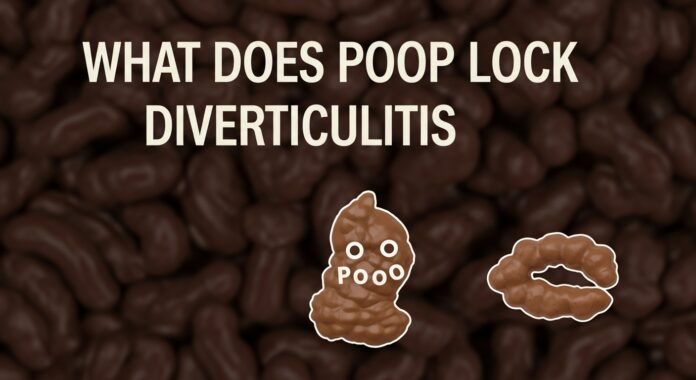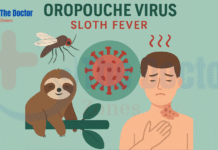What Does Poop Look Like With Diverticulitis
Let’s just say if you’re googling what does poop look like with diverticulitis, something weird probably happened in the bathroom. Maybe you stared into the toilet a little too long, tilted your head like a confused dog, and thought, “Hmm. That doesn’t look… normal.” And here you are.
Alright. Let’s talk about it — because poop can actually tell a lot about diverticulitis symptoms, and honestly, ignoring it only makes it worse. Yeah, this is the kind of adulting nobody prepares you for.
What Even Is Diverticulitis?
Before we go describing colors, shapes, and… textures (ugh), let’s get one thing straight: diverticulitis isn’t some mysterious alien disease. It’s what happens when tiny pouches in your colon wall (called diverticula) get infected or inflamed.
They’re like little balloons inside your intestines. Normally harmless. But feed them too many chips and not enough fiber, and one day they throw a tantrum. That’s diverticulitis — and your bathroom visits suddenly get a whole lot more interesting (and not in a good way).
The Basics: Poop 101 (with a Side of Pain)
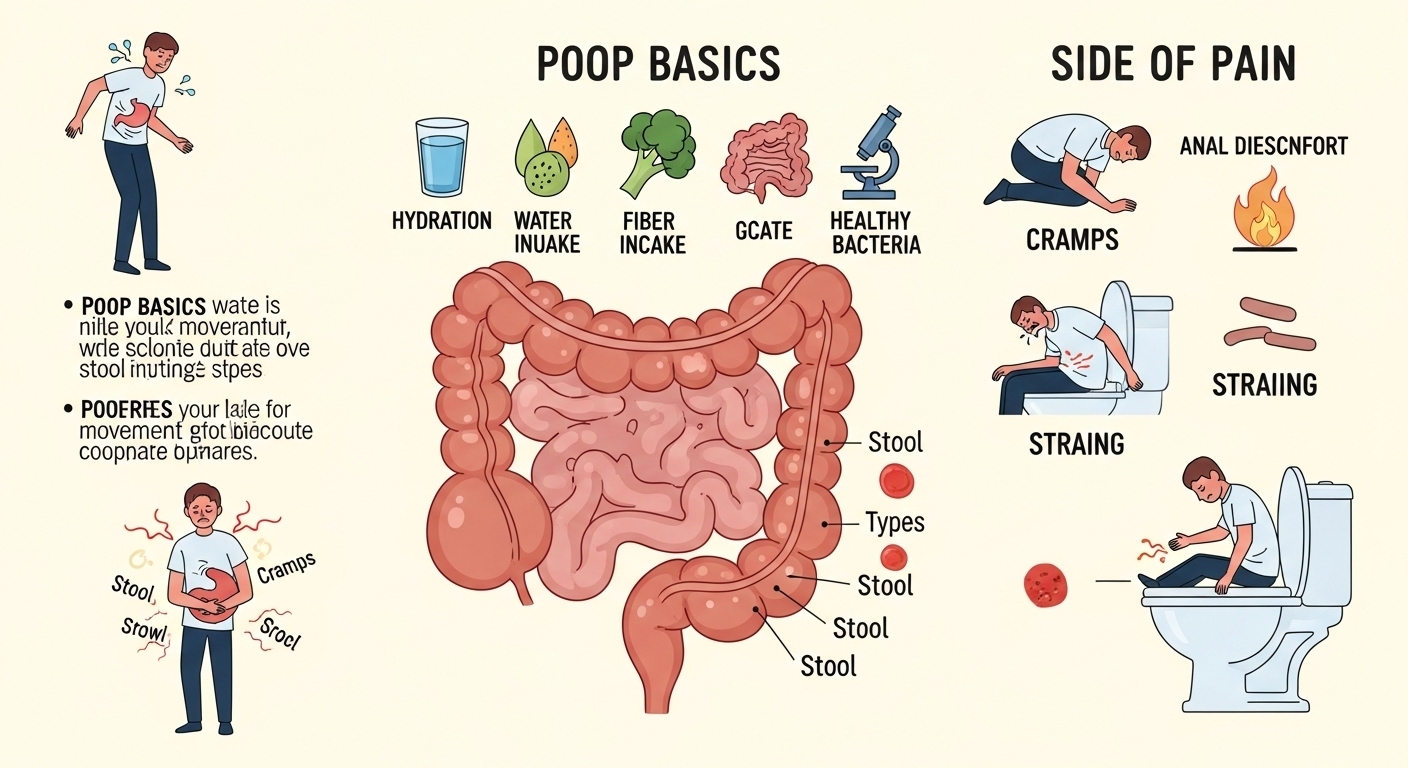
When your gut’s inflamed, your bowel movements go off the rails. Sometimes you’re constipated, sometimes it’s diarrhea, and sometimes… it’s both in the same day. Your colon can’t make up its mind.
Read more about: What is Commonly Misdiagnosed as Pink Eye? A Deep Look into Ocular Conditions
So yes, your poop changes. And sometimes dramatically.
Here’s a quick table to get the awkward part out of the way for “What Does Poop Look Like With Diverticulitis”:
| Type of Change | What You Might See in the Toilet | What It Means |
|---|---|---|
| Color Change | Brown, greenish, yellow, or dark | Inflammation, diet, or infection |
| Mucus in Stool | Clear or white slime on poop | Sign of irritation or infection |
| Hard Lumpy Poop | Looks like small marbles | Constipation linked to diverticulitis |
| Loose Watery Poop | Runny or mushy | Gut is reacting to infection |
| Blood in Stool | Red streaks or darker clots | Inflamed diverticula or bleeding |
Gross? Absolutely. But helpful? Oh yes.
The Color Game: What Your Poop’s Trying to Tell You
Let’s break down the poop color chart of diverticulitis like you’re decoding a mystery.
Brown (the Good Kind)
Normal. Boring. Lovely. Healthy poop should be medium brown — not too dark, not too light. If it’s consistently this shade, your gut’s probably chillin’.
Greenish or Yellow
This is when your colon’s like, “We’re in crisis mode.” Yellow stool can mean you’re not digesting fats well. Green poop often means food’s rushing through before bile can break it down. Both are common with diverticulitis flare-ups because your gut’s irritated and moving too fast.
Dark or Tar-Like
Okay, that’s a red flag. Not literally red, but black or tarry stool can mean bleeding higher up in your digestive tract. It’s time to call your doctor — not Google.
Red or Bloody
If you see red streaks or clots, it might be diverticular bleeding. Sometimes, it’s just hemorrhoids, but in the case of diverticulitis, the inflammation can cause small blood vessels to burst.
So yes — poop color can actually scream “HELP!” without using words.
Texture Tales: Firm, Fluffy, or… Soupy?
Alright, let’s move beyond colors. The consistency of your poop tells another side of the story.
| Texture | Possible Cause | What It Feels Like (Be Honest) |
|---|---|---|
| Hard lumps | Constipation, low fiber | Like passing pebbles. Painful. |
| Firm but smooth | Normal | You’re golden. Stay hydrated. |
| Soft and mushy | Mild infection | Feels weird but tolerable. |
| Watery diarrhea | Active inflammation | The “oh no, not again” moment. |
With diverticulitis, you may notice a pattern: alternating between constipation and diarrhea. Your colon gets moody — one day it’s sluggish, the next it’s running a marathon.
The Mucus Mystery
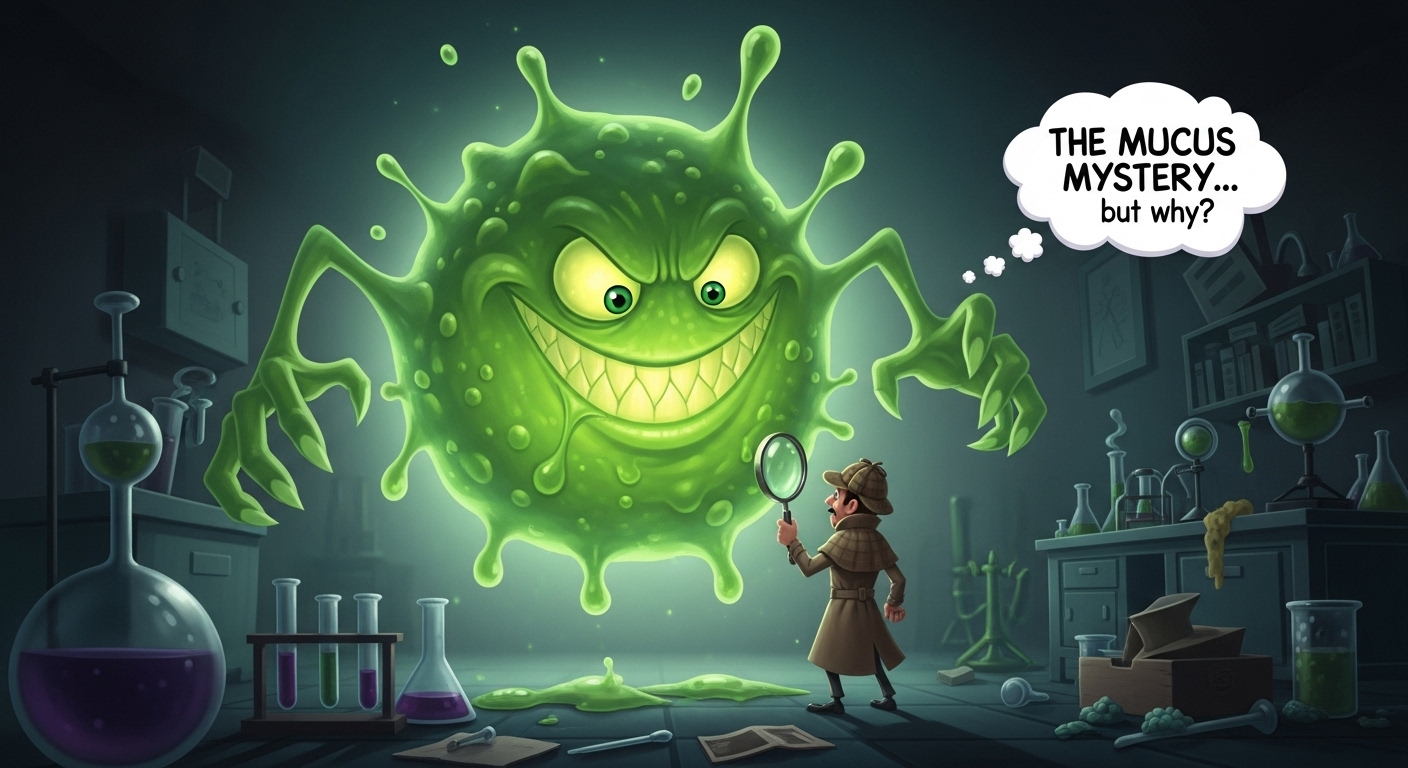
Here’s the part nobody wants to talk about: mucus in poop. Yep, that slimy, jelly-like stuff you sometimes notice floating or coating your stool.
When your colon’s inflamed, it produces extra mucus as a kind of protective response. Think of it like your gut sweating. So, if you’re seeing clear or white slime, it’s your colon saying, “I’m irritated, please stop feeding me spicy wings.”
But don’t panic — mucus alone doesn’t mean something terrible. It just means things are irritated, and probably inflamed.
Smell Check (Yes, We’re Going There)
Okay, brace yourself. Poop smell changes too. When diverticulitis hits, your digestion goes weird. Food ferments. Bacteria party like there’s no tomorrow.
Result? That unholy odor that makes you question your life choices.
If your poop smells foul, sour, or strangely metallic, it’s often due to infection or malabsorption. Basically, your gut’s chemistry set has exploded.
Diverticulitis and Gas — A Tragic Combo
If you’re farting more than usual, congratulations, you’re normal (ish). Excess gas, bloating, and abdominal pain are common companions to diverticulitis poop changes.
Your intestines trap gas because of inflammation, which slows digestion. So you’re not only uncomfortable — you’re also scared to cough in public.
When Your Poop Comes With Pain
Now this one’s serious. If you’re noticing poop changes and feeling pain in your lower left abdomen, especially after eating — that’s classic diverticulitis behavior.
Here’s what’s typically going on:
-
You eat something hard to digest.
-
Your colon’s pouches (diverticula) trap it.
-
The area gets infected, swells up, and hurts like crazy.
-
Your poop changes because digestion slows or stops.
So, it’s not just about what your poop looks like — it’s about What Does Poop Look Like With Diverticulitis.
A Quick Comparison Table: Normal Poop vs. Diverticulitis Poop
| Feature | Normal Poop | Diverticulitis Poop |
|---|---|---|
| Color | Medium brown | Yellow, green, red, or black |
| Texture | Smooth, sausage-like | Hard, mushy, or watery |
| Odor | Mild | Strong or foul |
| Frequency | 1–2 times a day | Irregular or unpredictable |
| Pain | None | Abdominal pain common |
| Mucus | Minimal | Often visible |
Diet Drama: What You Eat Shows Up Down There
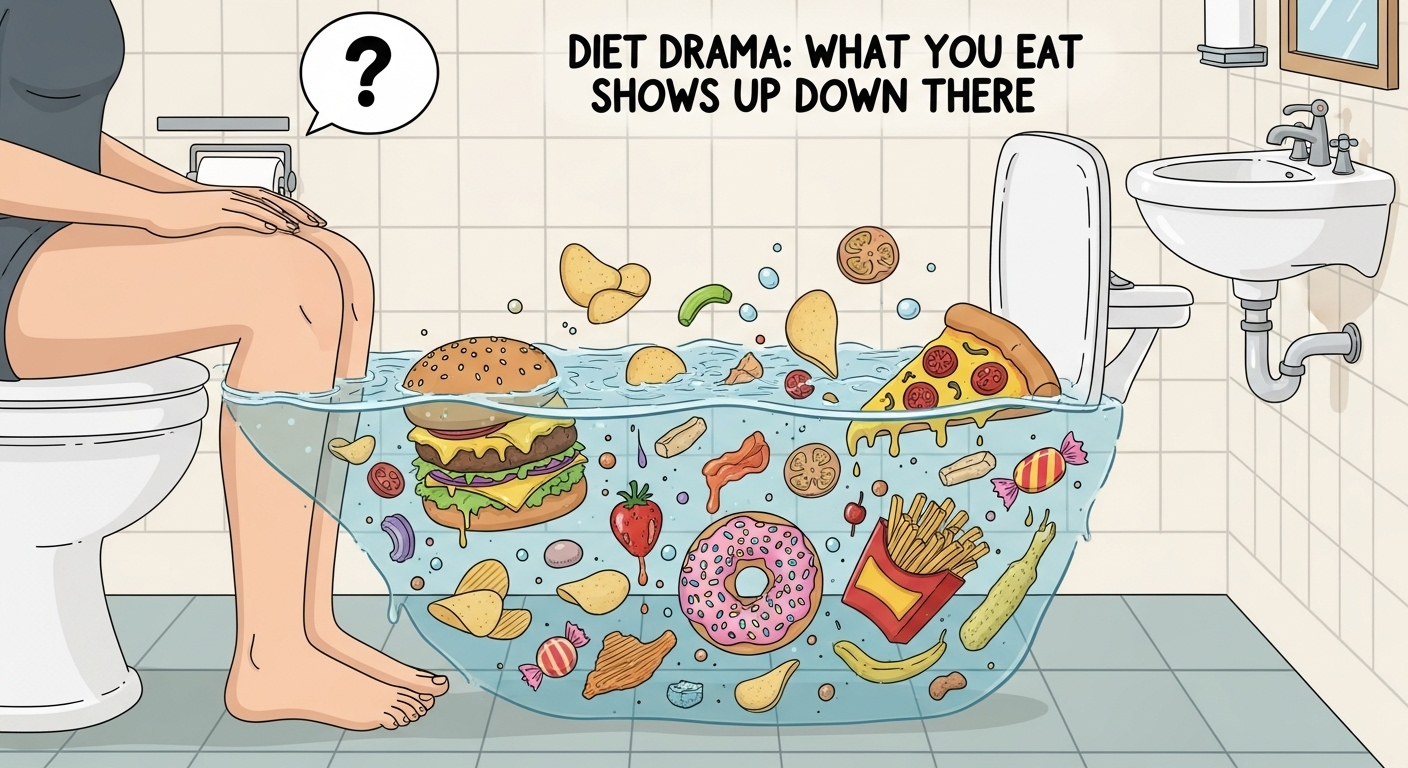
Your diet can make or break your colon’s mood. Low fiber, fried food, and processed junk are basically the villains here.
During a flare-up, doctors usually recommend:
-
A clear liquid diet (broth, water, tea, and juice without pulp).
-
Then slowly add low-fiber foods like white rice, eggs, and yogurt.
-
Once you’re healed, bring back high-fiber foods to prevent another flare-up.
Here’s a short table of foods that help vs. foods that hurt:
| Good for Diverticulitis | Bad for Diverticulitis |
|---|---|
| Oatmeal, bananas, cooked veggies | Popcorn, nuts, seeds |
| Yogurt, lean meat, rice | Red meat, spicy foods |
| Smooth soups, applesauce | Fried snacks, chips |
Your poop will thank you later.
Let’s Talk About Blood (Yeah, Sorry)
Seeing blood in stool freaks everyone out. And fair enough — it’s not normal. In diverticulitis, bleeding can happen if a pouch bursts or gets irritated enough to damage a blood vessel.
The good news: it’s usually small amounts, and the color helps tell you where it’s coming from.
-
Bright red = lower colon or rectum.
-
Dark red or black = upper digestive tract.
Still, don’t try to self-diagnose. Get checked. Because sometimes that blood means “mild infection” and other times it means “you need antibiotics now.”
The Post-Flare-Up Phase: Getting Back to Normal
Once treatment starts (usually antibiotics and a soft diet), your poop starts acting normal again. Slowly.
The mucus decreases, color stabilizes, and pain fades. But your colon will always remember — like a bad ex. So, treat it nicely.
Drink water. Eat fiber. Don’t binge spicy noodles at 2 a.m. You’ll save yourself a world of hurt (and awkward bathroom situations).
Funny (But Real) Bathroom Moments with Diverticulitis
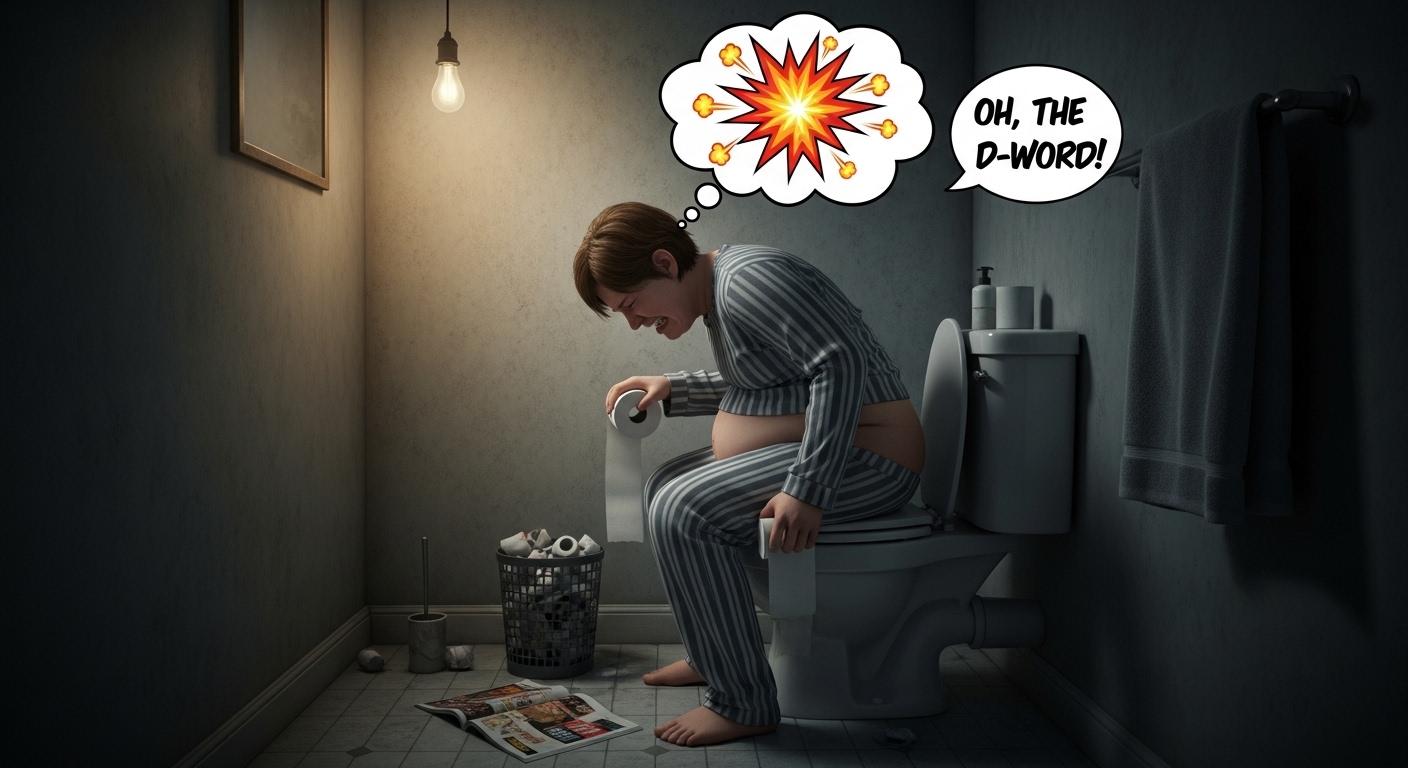
-
That moment when you sit down and… surprise! It’s not what you expected.
-
The sheer panic of flushing and realizing you should’ve looked first for “research purposes.”
-
Googling “why does my poop smell like batteries” at 3 a.m.
-
Wondering if you should start journaling your poop like a health influencer.
Let’s face it — talking about poop is awkward. But for anyone dealing with diverticulitis, it’s a daily concern. And the best thing you can do? Pay attention without freaking out. Your poop’s not being dramatic — it’s sending messages.
When to Worry
Sometimes, poop changes are no big deal. Other times, they’re your body yelling “Call the doctor NOW.”
Seek help if you notice:
-
Persistent pain in your lower abdomen
-
Fever or chills
-
Severe constipation or diarrhea lasting days
-
Visible blood in stool
-
Vomiting or signs of dehydration
Because untreated diverticulitis can lead to complications like abscesses or even surgery. Not fun.
Can Poop Go Back to Normal?
Yes! Most people with diverticulitis recover completely with antibiotics and dietary changes. It just takes patience.
And probably a new respect for fiber.
Your poop color, smell, and texture will gradually even out — kind of like a rebooted digestive system.
Final Thoughts (Before You Flush)
So yeah, what does poop look like with diverticulitis? In short: unpredictable, moody, and way too informative. Sometimes it’s mucusy, sometimes bloody, sometimes looks like it had a bad day.
But it’s all part of the process — your gut’s version of texting you “something’s wrong.”
So, laugh about it if you can, take care of your diet, and never underestimate the power of good fiber and hydration. Your toilet will thank you.
FAQs: Real Questions People Actually Ask Online
• Does poop float or sink with diverticulitis?
Usually, it sinks — but if it’s fatty or has excess gas, it might float. Floating poop alone isn’t serious, but if it’s greasy or pale, your digestion might be off.
• Can diverticulitis cause thin poop?
Yep. Narrow or pencil-thin poop happens because inflammation narrows your colon passage. If it sticks around, tell your doctor.
• Why does my poop smell metallic?
That’s the infection talking. Diverticulitis poop smell can be unusually strong or metallic due to blood or bacterial changes. Gross, but common.
• Can stress make diverticulitis poop worse?
Oh yes. Stress tightens your gut, slows digestion, and makes your colon more reactive. Basically, anxiety + diverticulitis = chaos.
• How long until poop looks normal again?
Usually a few days after treatment starts. Once inflammation cools down, your stool color and consistency gradually go back to their pre-chaos state.

